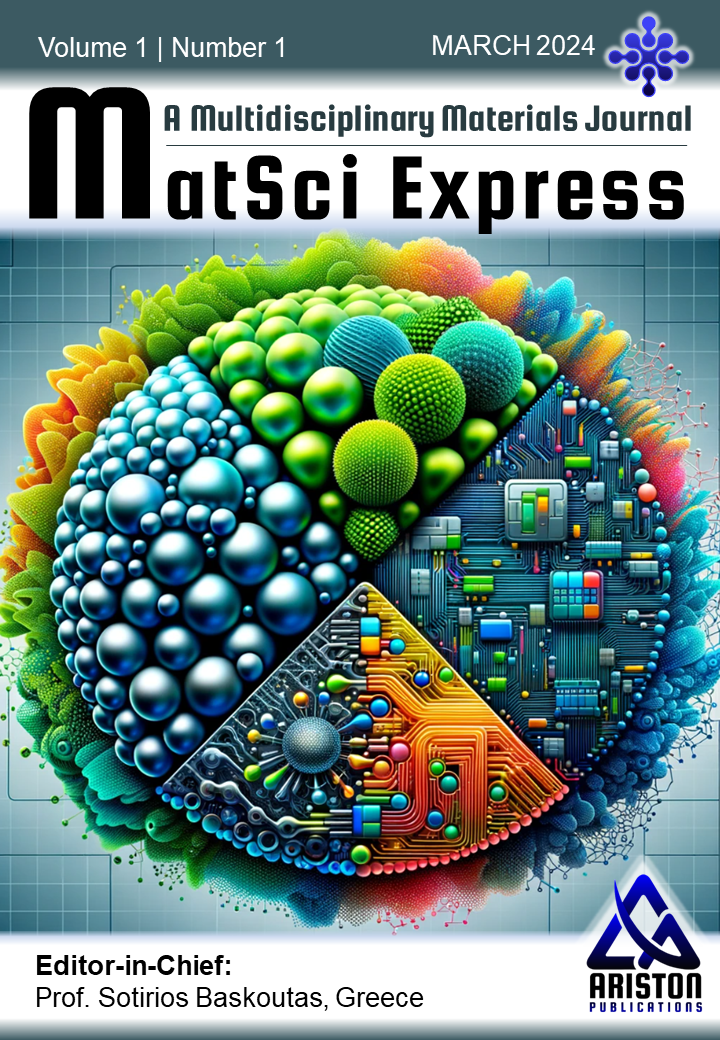K. C. Dubey, Anchal Srivastava, R. K. Shukla
1 Department of Physics Shia P. G, College Lucknow-226020 India
2 Department of Physics, University of Lucknow, Lucknow-226007, India
* Author to whom correspondence should be addressed:
krishnacdubey@gmail.com (K. C. Dubey)
rajeshkumarshukla00@gmail.com (R. K. Shukla)
ABSTRACT
Perovskite solar cells (PSCs) have emerged as a promising photovoltaic technology due to their high power conversion efficiency (PCE) and cost-effective fabrication. However, the toxicity of lead-based perovskites, such as MAPbI₃, poses significant environmental and health concerns, limiting their large-scale commercialization. This study explores lead-free alternatives by designing and simulating a double-absorber perovskite solar cell with the structure FTO/TiO₂/MASnBr₃/FAMASnGeI₃/NiO/Au using the SCAPS-1D simulation tool. The proposed device leverages the complementary bandgap properties of MASnBr₃ (1.3 eV) and FAMASnGeI₃ (1.4 eV) to enhance light absorption across the visible spectrum. A systematic optimization of key parameters—including layer thickness, doping concentration, and defect density—was conducted to maximize PCE. The optimal configuration features a 10 nm TiO₂ electron transport layer (ETL), a 150 nm MASnBr₃ absorber, a 225 nm FAMASnGeI₃ absorber, and a 150 nm NiO hole transport layer (HTL). Additionally, defect densities were minimized to 10¹³ cm⁻³ (MASnBr₃) and 10⁹ cm⁻³ (FAMASnGeI₃) to suppress non-radiative recombination. The optimized device achieved a record PCE of 34.70%, with an open-circuit voltage (Voc) of 1.3284 V, a short-circuit current density (Jsc) of 28.86 mA/cm², and a fill factor (FF) of 90.52%. Further analysis revealed that low series resistance (0 Ω·cm²) and high shunt resistance (10⁷ Ω·cm²) are critical for minimizing losses. This study provides a theoretical foundation for fabricating high-efficiency, environmentally friendly perovskite solar cells and highlights the potential of tin-based perovskites as viable alternatives to lead-based counterparts.

Significance of the Study:
This research provides a crucial pathway toward sustainable photovoltaics by demonstrating the potential of lead-free, tin-based perovskite solar cells (PSCs) to achieve record efficiencies (34.70%) while eliminating environmental toxicity concerns. The comprehensive numerical optimization establishes design principles for high-performance double-absorber architectures, offering experimentalists a validated framework for developing stable, commercially viable alternatives to lead-based PSCs. The study’s insights into defect engineering, charge transport optimization, and thermal stability directly address key commercialization challenges in perovskite photovoltaics.
Summary of the Study:
Through SCAPS-1D simulations, this work designed an optimized FAMASnGeI₃/MASnBr₃ double-absorber PSC with 34.70% PCE, featuring 150/225 nm absorber thicknesses, minimized defect densities (10¹³-10⁹ cm⁻³), and ideal charge transport layers (10 nm TiO₂/150 nm NiO). Key achievements include exceptional Voc (1.3284 V) and FF (90.52%) through recombination suppression, with performance validated at 300 K. The study provides a complete theoretical blueprint for fabricating efficient, eco-friendly PSCs while identifying future research directions in stability and interface engineering.
